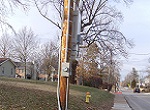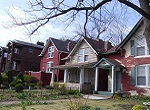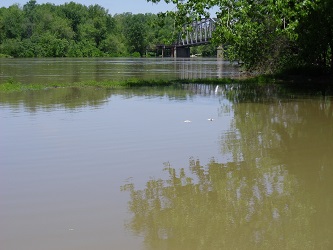Neighborhood Solar Solutions Could Be
Cost-Effective
Last Updated: September 4, 2023
Communities can band together to create their own neighborhood solar installation. As this practice has become more common in the U.S., it is now most likely that the output of electricity from a local solar array will simply contribute to the power in the grid. That power is of course available to anyone, thus defying the vision some of us had that we could bypass the local utility and to create their own small-scale solar power installation.
Why would a neighborhood opt for community solar if they are not the direct and sole beneficiaries of the project? Perhaps residents want to contribute to local or worldwide sustainability without the expense, bother, and decreased ability to have shade trees on their own residential lots. Architectural and tree preservation considerations are likely at the forefront of this motivation. In a very few instances, the savings on energy bills might offset the costs of the project, especially if a neighborhood can receive a grant or major contribution.
Recently the incentive for community solar in the U.S. has been expanded through the newly established Greenhouse Gas Reduction Fund, authorized by the Inflation Reduction Act, which will make grants for community solar projects. Recently I had a very promising talk with an EPA employee about the rollout plans.
We also hold out some hope that neighborhoods or communities can establish their own microgrids. with the resulting power to be distributed only within that neighborhood to bring household electricity costs close to zero.
Regardless of the economic arrangement for neighborhood solar you are contemplating, the principles about where and how to undertake such projects are almost the same.
Large rooftops and vacant fields contain plenty of space for your own small-scale solar array. You could even take advantage of a large parking lot to install a substantial number of solar panels at a height that would allow safe and somewhat shady parking underneath them. This page concentrates on neighborhood solar energy, and since we're a community development website, we'll be talking about solar energy from a relatively decentralized perspective.
Neighborhood solar buying discounts and debates about how to help with the hefty up-front costs of residential and small business solar installations also may be be something you're thinking about.
Let's admit right now that it would be easier to organize such a program in a condominium association or other strong homeowner association situation where there already are common assets to administer. Developers sometimes are installing microgrids as a selling point for the sustainability-minded customer.
However, solar energy applications are coming along so rapidly that what seemed really pie-in-the-sky when we started this website a few years ago now seems not only realistic, but also something that generates a fair amount of interest among our readers.
If you and your neighbors would like to figure out how to make the sun work for you, your local electric utility might help you. To date, 36 states in the U.S., plus Washington DC and three territories, have some version of RPS (Renewable Portfolio Standards) as a requirement for some or all electric utilities. Other states have set up relevant goals.
These standards require a certain percentage of the utility's total output (called a portfolio, as in a stock portfolio) to come from renewable energy sources. The states vary widely in their enthusiasm for solar energy generation and other alternative energy.
However, also be aware that some states are actively prohibiting these neighborhood or community solar projects, or erecting silly obstacles.
Other parts of the world are ahead of the U.S.
If you're already entertaining this idea, we recommend that you go right to a U.S. Department of Energy guide found online, which is entitled Guide to Community Shared Solar: Utility, Private, and Non-profit Project Development. This report describes the three organizational models for most projects, including a neighborhood solar demonstration.
We think it's feasible for some neighborhoods to make a solar array field and then transfer the energy into individual homes or certainly into community centers and business districts.
In the Industrial Age (and here we include the Information Age), energy has tended to come from fossil fuels. There is now considerable concern about both the geopolitical jeopardy our dependence on foreign oil creates from time to time, as well as using up expensive and/or market-volatile petroleum and natural gas at alarming rates.
So in the post-industrial age we're entering now, the energy sources will be the renewable and free ones that Mother Nature provided, sun and wind.
How Solar Energy Might Impact Neighborhoods
First, you may want to understand the difference between passive
and active solar. In passive solar, no electricity is generated. You
are simply substituting solar energy for something that electricity or
fossil fuel might otherwise do, such as heat or cool a space.
For example, if you're in a cold climate with a south-facing porch or a free-standing greenhouse, you're taking advantage of passive solar at least in part to heat those spaces. Passive solar emphasizes orientation of buildings toward the sun in such a way as to minimize energy usage.
Planning commissions and city councils will need to become increasingly aware of passive solar considerations as residents are more conscious of wanting to use renewable energy resources. Sometimes zoning issues surrounding solar have become a hot topic. The Grow Solar Partnership has compiled what they call a toolkit for addressing this issue. This was compiled for Minnesota, Wisconsin, and Illinois, so you might have to adapt this considerably if your climate is quite different.
Zoning originated on the premise of making that sure that people had light and air; now the sunlight issue is back with an extra layer of meaning.
In active solar energy systems, you're converting the sun's power to thermal energy or electricity. Thermal energy can heat and cool a home quite nicely.
Another active system receiving lots of attention right now is photovoltaic energy. You'll see this abbreviated as PV. There are many technologies under investigation in attempts to find the most efficient and effective PV methods. Basically light hits a surface known as the substrate, made of silicon. Yes, it's the same stuff as computer chips.
The surface has been treated with chemical layers carrying opposing positive and negative charges. Again, the process of coating thin silicon with various chemicals has been pioneered in the computer industry. When light strikes the surface of the substrate, electrons move between the positive and negative layers and generate electricity.
Photovoltaic energy systems are said to be either "tied" to the "grid," the overall system that delivers electricity to your home and your city, or they may be "off the grid." Grid-tied systems are more interesting, because they introduce the possibility that instead of you owing your electric utility money, they owe you a credit.
If your group is part of the smart grid, you will be able to receive electricity from the grid or send your surplus to the grid, depending on your usage and the sun-power you have generated. You will have what looks like an extra electrical panel box in your home that controls sending to the grid.
If your system is "off the grid," then you simply receive the benefit of whatever sun makes its way toward you. Obviously for a typical roof-mounted home solar system to work best, whether grid-tied or off-grid, you need unshaded south and southwest roof exposures.
Expect to see a revival of zoning regulations and disputes about sun being blocked.
There are not many instances yet of municipalities requiring solar energy generation in certain zoning districts or planned developments, but a few subdivisions have tried making every home solar as either a marketing gimmick or a heartfelt attempt to provide extra value.
In terms of appearance, thinner solar panels are being developed all the time, and there is a great deal of experimentation with their design. The days of the massive solar collectors that protrude from the roofline and really play havoc with your architecture are ending. Newer installations tend to look more like a shiny roof than dormers gone wrong.
There also are experiments with solar collector shingles. Certainly historic districts are much more likely to approve an ordinary-looking shingle than a sleek black panel.
Neighborhood solar installations scaled to power the entire historic area, somewhere on the periphery, may be more practical than rooftop installations in providing renewable energy to our older neighborhoods.
On a commercial scale, sunbeams may be "concentrated" by using giant mirrors to focus them, but you're not likely to encounter that in your neighborhood.
Slightly more likely is a solar array, meaning a grouping of solar collectors, for example, over a parking lot. But it's worth considering solar options if you're building or significantly overhauling a neighborhood commercial area.
Neighborhood solar power could be effective now for lighting of paths, just as individual residences do, and for powering outdoor amenities such as fountains.
The process of generating power on a small scale, such as an individual residence, ranch, or neighborhood, is known as microgeneration.
Thus far microgrids providing neighborhood solar may or may not be cost-effective, depending on available tax credits and future energy savings for a reasonable payback period.
Subsidies from the utility and state or local government often are necessary to make neighborhood solar and individual homeowner installations effective from the standpoint of cost. In most situations individuals have to want to be green to pony up the extra dollars up-front.
However, as production scales up, research discovers more sophisticated thin-layer technologies, and more and more entrepreneurs enter the solar production and installation businesses, costs should continue to decline. At least in the near term, though, good old-fashioned neighborhood organizing will help bring group discounts as fast as anything else.
Organizations have sprung up around the country to help neighborhoods negotiate essentially bulk discounts on installation of solar energy facilities. As examples of bulk purchasing programs, see the Brooklyn Microgrid or Solar United Neighbors.
This subject is evolving very quickly. We continue to monitor it for you. Let us know if you see a neighborhood solar application and what you think of it.
Additional Reading on Hyperlocal Green Solutions
Join GOOD COMMUNITY PLUS, which provides you monthly with short features or tips about timely topics for neighborhoods, towns and cities, community organizations, and rural or small town environments. Unsubscribe any time. Give it a try.




